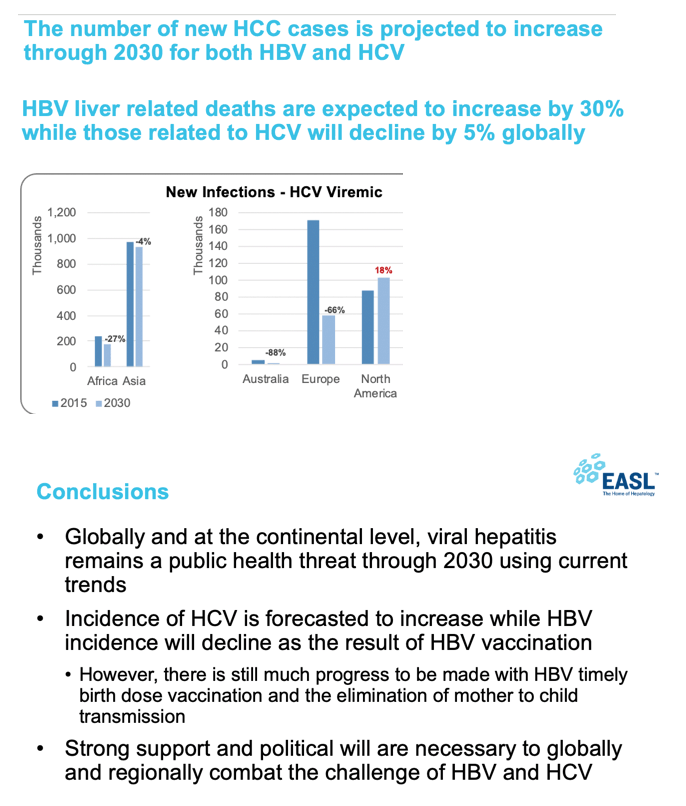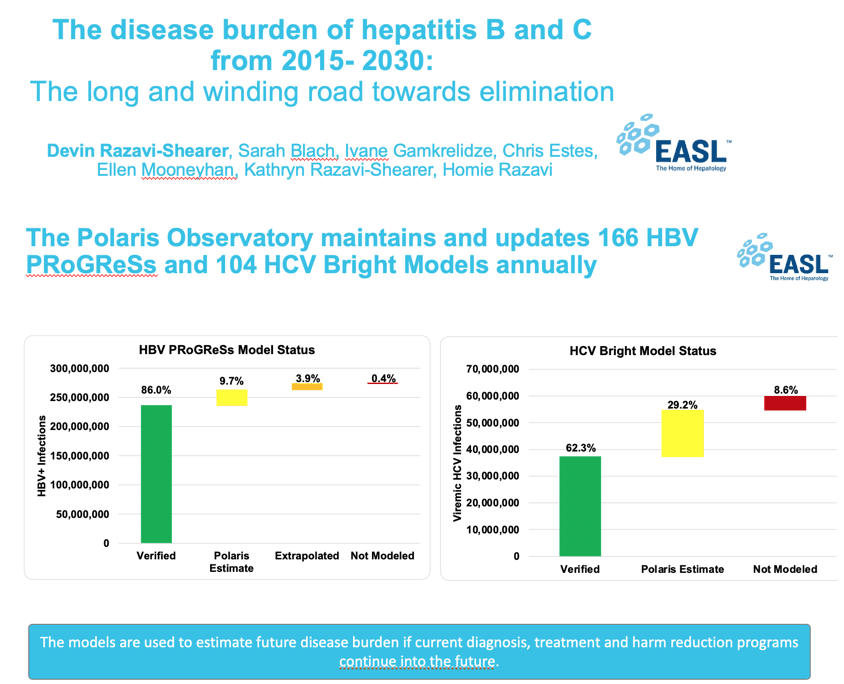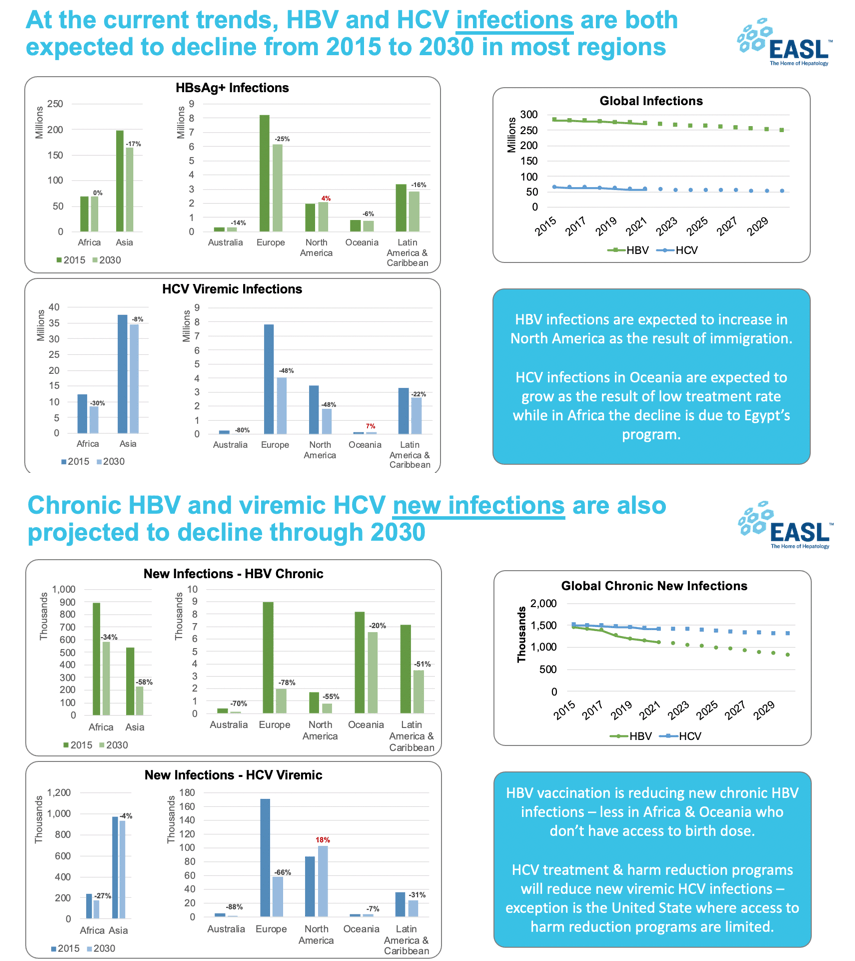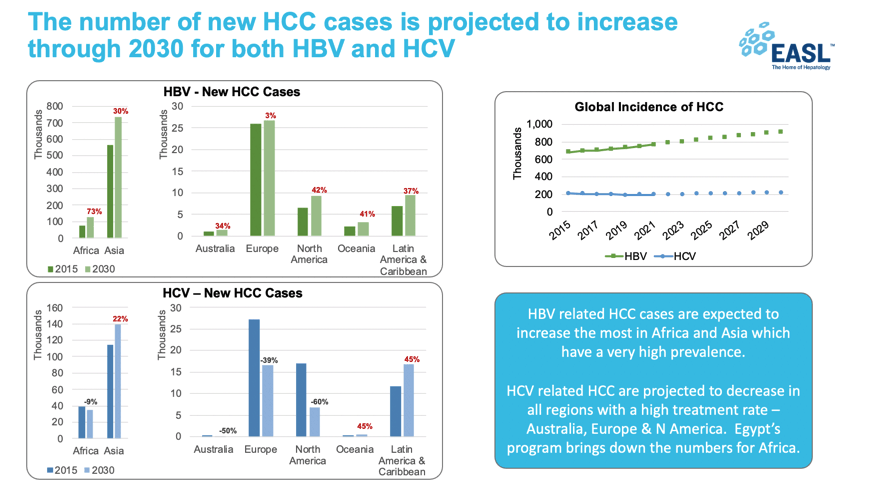 |
 |
 |
| |
The disease burden of hepatitis B and C from 2015- 2030: The long and winding road towards elimination
|
| |
| |
EASL 2022 June 22-26 London
Devin Razavi-Shearer, Sarah Blach, Ivane Gamkrelidze, Chris Estes,
Ellen Mooneyhan, Kathryn Razavi-Shearer, Homie Razavi
The US is seeing an increase in incidence because of the lack of federal funded screening-linkage-treatment, but also the very high barriers or even illegality of harm reduction programs that could aid in the reduction of incidence.


The percentages represent what portion of all estimated infections are in which modeling category.
So for HBV 86% of the ~275 million infections globally are in models that have received feedback from in country experts, 9.7% are based on country data but are not verified with in country experts, 3.9% use extrapolated data (this means vaccination and population data are country specific but the prevalence, diagnosis and treatment levels are based on regional averages). For the last 0.4% these are just weighted by population by region.
For HCV these percentages are out of 59.9 million infections globally.

The US is seeing an increase in incidence because of the lack of federal funded screening-linkage-treatment, but also the very high barriers or even illegality of harm reduction programs that could aid in the reduction of incidence.

HBV - "Unfortunately very few countries are treating that many people, and the stringent eligibility guidelines add to this problem. The current treatments are quite effective, they are just being severely underutilized." what are stringency of the guidelines? and why? I dont understand since HBV treatment (TDF or TAF) are ubiquitous & I would think at the point inexpensive, is it that there is no organization around providing treatment?
The current guidelines set forth by the major liver organizations (including AASLD and EASL) are quite complex. They are made by hepatologists and gastroenterologists to essentially only treat people that you are almost certain would progress to later stages of disease. However, this can mean waiting until people can progress to say cirrhosis before they are eligible for treatment. The result of the guidelines is that 1) they are far too complicated for primary care physicians or nurses to implement and 2) Often people are not treated until they are already quite sick. It is impossible to implement a national elimination strategy without the ability for PCPs to treat at least the non-advanced cases. TDF and TAF are widely available and in most countries and are quite cheap. While sometimes people bring up concerns around safety the argument has always been that the same drugs are being used in people who do not have a disease but are at risk of developing a disease (PrEP) so why would you not treat people that are known to have a disease and among whom you would be able to greatly reduce if not eliminate the probability of them progressing to later stages. Unfortunately there is not a lot of organization around providing treatment and in many countries the onus of seeking out and receiving treatment is on the patients themselves. In many countries it appears that they are more interested having a vaccine program and waiting for the problem to eventually go way, instead of treating the "problem", the people already infected whose lives, and families' lives, are directly impacted by this preventable and highly treatable disease.

|
| |
|
 |
 |
|
|